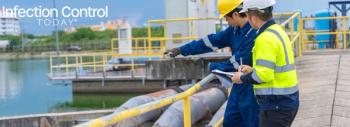
Ensuring Safe Journeys: Infection Prevention in Public Transportation
While public transportation offers convenience and accessibility, it is crucial to remain mindful of the potential presence of germs, emphasizing the importance of adopting infection prevention measures during travel times.
For the Holidays this year, I traveled to the lively city of Washington, DC, to visit my dear friends. The city has a highly convenient public transportation system, including an extensive network of buses and a well-connected metro system, providing residents and visitors with efficient and accessible transit options throughout the city. During my weekend in DC, I experienced a journey that involved taking a flight, utilizing different metro rides, and using a few ride-sharing services. As a passenger and infection preventionist, I reflected on the various measures to reduce the risk of acquiring a traveling germ.
It is essential to adopt proactive infection prevention practices to minimize the risk of falling ill while utilizing public transportation.
- Firstly, consistently wash hands with soap and water or use hand sanitizer, especially after touching common surfaces such as handrails and door handles. I recommend carrying hand sanitizer or hand sanitizing wipes with you during your journey.
- Avoid touching your face, particularly the eyes, nose, and mouth, as these are entry points for viruses and bacteria.
- A face mask can serve as an additional protective measure, preventing the inhalation or exhalation of respiratory droplets. This is particularly important during respiratory virus season.
- Maintain a safe distance from individuals exhibiting symptoms of illness, and choose less crowded times for travel if possible. Also, if you are feeling unwell, it is imperative to refrain from using public transportation to prevent the potential spread of illness to others and contribute to maintaining a healthier commuting environment.
- Opt for contactless payment methods to reduce physical contact during fare transactions.
- Choose open windows in buses or trains that have windows to improve ventilation and air circulation, which can help disperse airborne particles.
- Consider carrying disinfectant wipes to clean personal spaces, like seat handles and armrests.
It is also recommended by APIC, to conduct a “seat check” before sitting down and avoid visibly soiled chairs. - Regularly disinfect personal items that travel with you, such as mobile phones, wallets, and keycards, to minimize the risk of transmission.
- Lastly, staying informed about local authorities' health guidelines and regulations ensures a proactive approach to safeguarding one's well-being during public transportation journeys. Some public health recommendations may include receiving your flu vaccine and regularly performing hand hygiene.
Public transportation is a vital and commendable component of urban mobility, offering convenience, efficiency, and environmental benefits. While embracing the advantages of communal transit, it is equally important to prioritize health and safety. By adopting simple yet effective infection prevention measures, commuters can contribute to the overall well-being of themselves and their fellow travelers. As we navigate the diverse and bustling landscapes of public transportation, a harmonious blend of appreciation for its merits and a commitment to safety will undoubtedly enhance the experience for everyone involved. So, let's continue to enjoy the advantages of public transportation while remaining vigilant and considerate, ensuring that our journeys remain not only efficient but also safe and healthy for all.
Newsletter
Stay prepared and protected with Infection Control Today's newsletter, delivering essential updates, best practices, and expert insights for infection preventionists.





